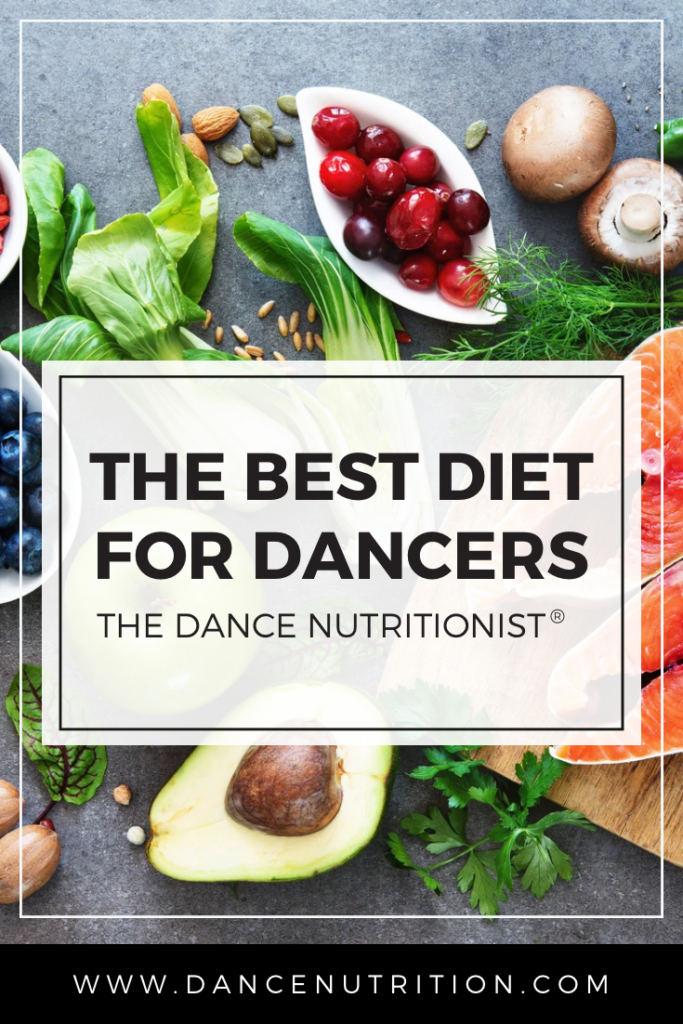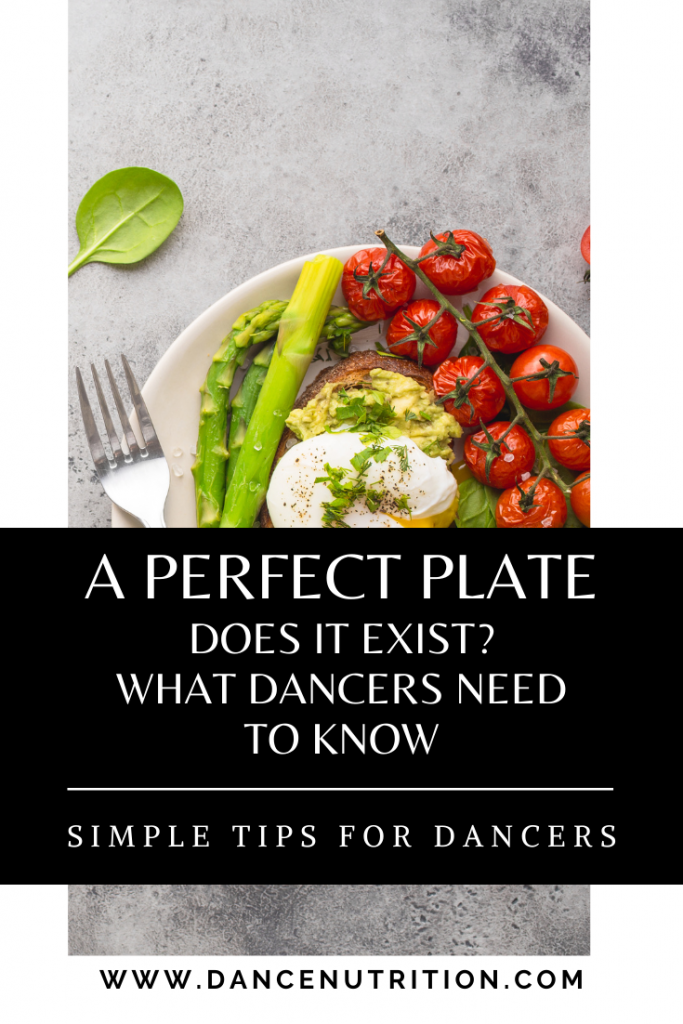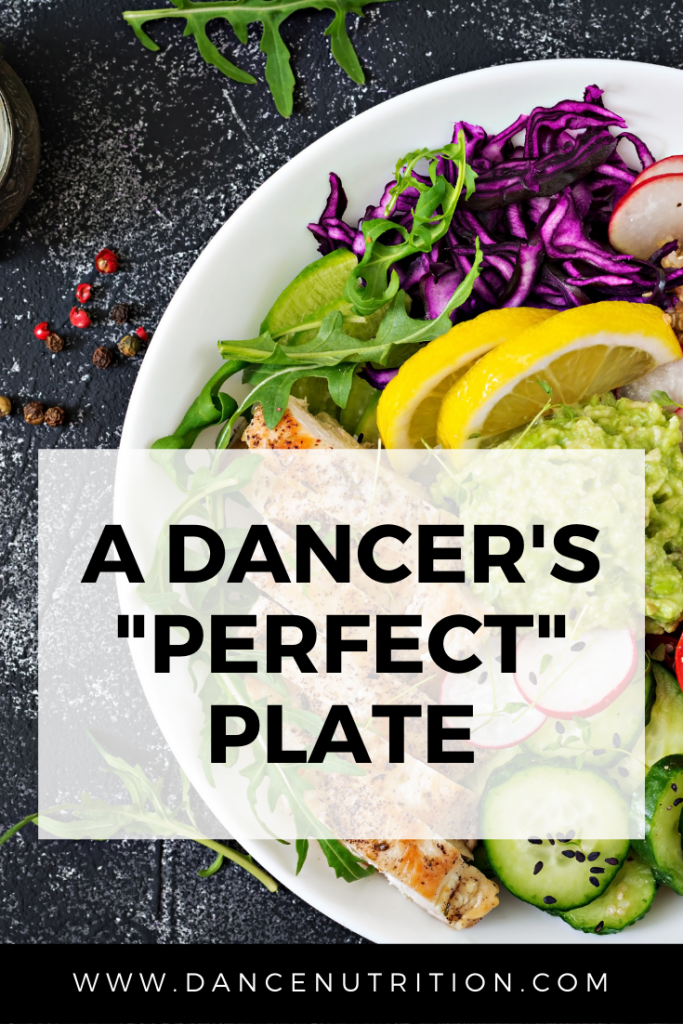In pursuit of their performance, dancers often feel swayed by the illusion of a “perfect” diet. However, this can lead them down an unsustainable path in the context of food. Rigid food rules create a cycle of guilt, anxiety, and stress at mealtimes. With a dancer’s risk of developing an eating disorder three times higher than that of the general person, it’s imperative to recognize the importance of nutrition for performance.
Rather than aiming for perfection, dancers can optimize their food choices— enhancing energy, increasing jump height, improving focus and mental clarity, and even reducing injury risk. In this blog post, we’ll uncover 5 lifestyle changes to help dancers optimize their plates or performance.
10 things that can happen when you choose a sustainable meal plan:
- You’ll feel empowered at meal times.
- You’ll have consistent energy in class,
- The feeling of food guilt will lessen and ultimately disappear.
- You’ll feel more confident in your body.
- You’ll incorporate a variety of nutrients into your meals and snacks, including protein, carbohydrates, fat, calcium, iron, and vitamin D.
- Your weight will stabilize in a way that best supports your hormonal health and overall well-being.
- You won’t feel restricted or ravenous around food.
- You’ll be free of obsessive thoughts about food.
- You’ll experience enjoyment, rather than stress, at meal times.
- You’ll be better able to tune into fullness naturally and control portions.

5 Healthy Diet Tips For Dancers
#1 Hydrate!
Your body is made of 60% water. Especially with high sweat loss for dancers, it’s important to prioritize your hydration efforts. But how much fluid should a dancer aim for in a day?
Individual recommendations vary, but a starting point is three liters. You’ll need a bit more if you’re rehearsing for longer periods or dancing in hotter and more humid climates (such as during the summer intensive season).
Optimize Your Plate: For dancers struggling to meet their energy needs through food, adding calorically dense fluid to meals, like milk, counts towards this hydration goal. When drinking water, optimize your hydration with a salty snack (like olives or pretzels) and easily digestible carbohydrates to replenish lost glycogen and electrolytes. Eating various fruits and veggies throughout your week also helps keep you hydrated.
#2: Don’t restrict carbohydrates
For dancers, carbohydrates are the body’s preferred fuel source. Complex carbs are high in dietary fiber, slowing digestion for steady energy. Simple carbs offer quicker energy (like that pick-me-up you might need before class ends). Read this article to learn more about the differences between simple and complex carbohydrates.
Optimize Your Plate: Incorporate plant-based foods such as whole grains like oats, barley, farro, bulgar, and brown rice in addition to starchy veggies like potatoes, corn, and squash. Fruits, legumes, nuts, and seeds are also helpful options!
#3: Incorporate protein
There are two options for protein in a dancer’s diet: animal and plant. Animal proteins are often considered “high in biological value,” containing all essential amino acids necessary for muscle building. Vegetarian and vegan dancers can obtain all essential amino acids from a well-planned plant-based diet.
Optimize Your Plate: If you’re not a vegetarian or vegan, incorporate animal proteins like whole eggs, milk, yogurt, chicken, cheese, and meat. If plant-based, aim for abundance and variety. Professional resources are available to help plan your plant-based diet. Calcium-containing foods are essential for a dancer’s bone health. Additionally, Vitamin D aids with calcium absorption and bone metabolism. Proactively incorporate calcium- and vitamin D-containing foods like yogurt, cheese, and milk. Food sources of vitamin D include fatty fish, fortified orange juice and milk products, mushrooms, and egg yolks. Aim for at least 3 servings of calcium- and vitamin D-containing foods daily.
#4: Always include foods rich in fat!
Fat is an essential macronutrient, especially for active dancers. Adding fat to meals and snacks promotes satisfaction, helping you to feel full and satisfied between meals. Fat also aids in hormonal balance, enhances vitamin absorption, and even alleviates the natural levels of inflammation from dancing.
Optimize Your Plate: Heart-healthy fats like olive and canola oil, nuts and nut butter, avocados, and wild fish benefit the body. To learn more about the role of fat in the body, check out this article.
#5: Make room for fun foods
Your performance potential as a dancer spans beyond your physical health— mental and emotional health also play a role. Fixating on a “perfect” plate is not the goal. As a dietitian for dancers and within The Healthy Dancer®, I teach you how to integrate performance nutrition with an intuitive approach. Your relationship with food becomes equally as important as the foods themselves. Here is a list of articles to read more about my unique approach to nutrition for dancers.
- Avoid these common nutrition mistakes among dancers.
- Intuitive Eating For Dancers
- How to choose satisfying foods
- Making Peace with “Clean” Foods
[FREE DOWNLOAD] The Healthy Dancer® Guide to Balanced Nutrition




